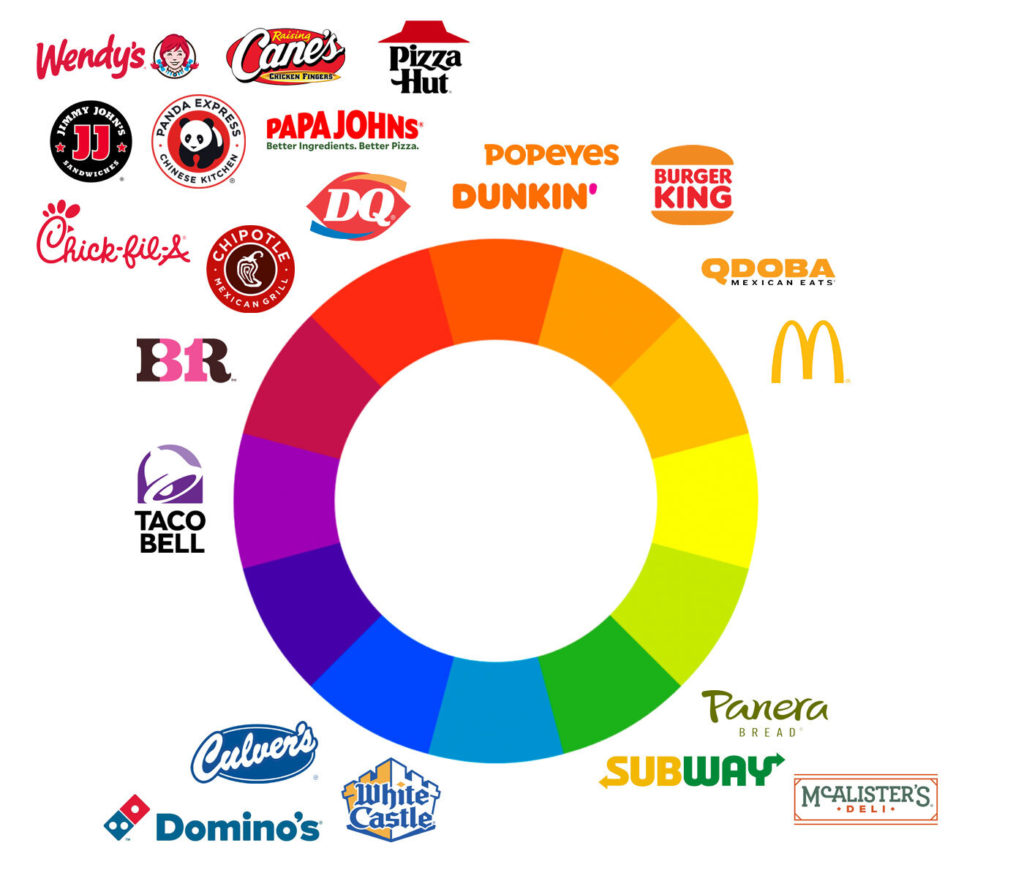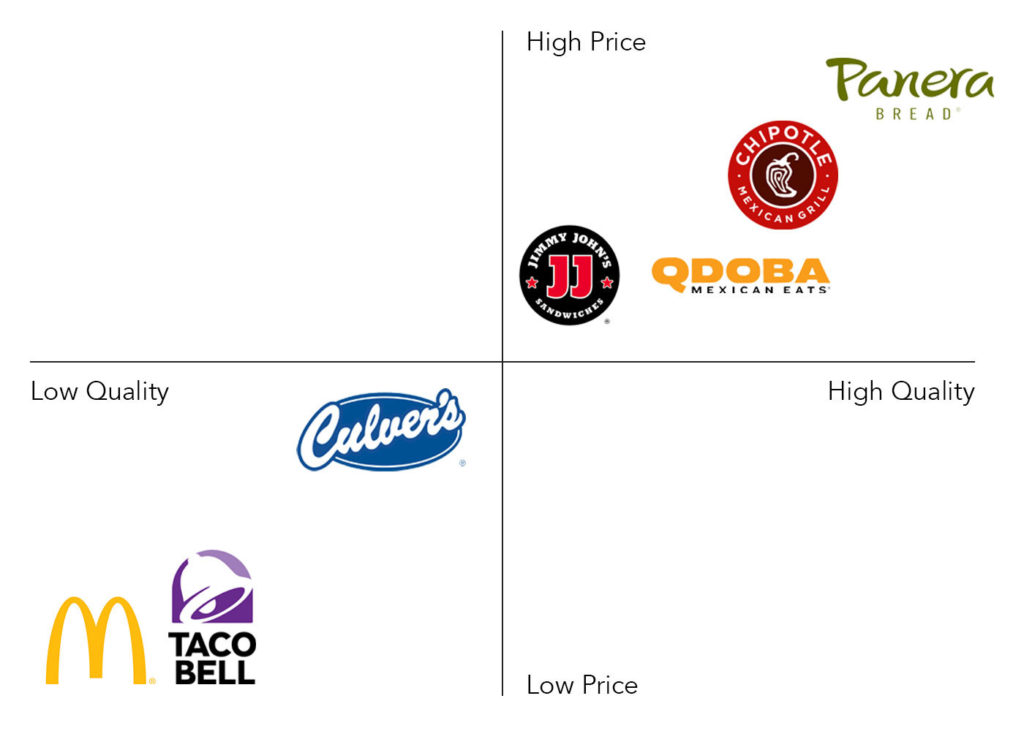Learning From (and Then Beating) the Competition
“We’re looking to gain more market share.”
It’s one of the most common sentences we hear from prospective clients.
Sometimes it’s a small business looking to stand out in a crowded market, or a mid-size company that’s seen tremendous growth but is now plateauing. And sometimes it’s a large company that already dominates the industry but wants to stay ahead.
No matter the exact history, they all have one thing in common: their sights are set on the competition.
The danger of comparison and art of comparing
Growing up, my mom used to always tell me, “Don’t compare yourself to other people. When you do, one of two things happens: You either become bitter or you become vain.”
That’s good advice for life. But it’s a different story for businesses. Even though bitterness or vanity can still happen, keeping an eye on the competition is a critical part of any brand strategy.
We’ll walk you through how.
Identifying the competition
“I have been up against tough competition all my life. I wouldn’t know how to get along without it.” -Walt Disney
When we start working with clients, we ask them who their competitors are. And then we go do our own research—because often, they have more competition (and often different competition) than they realize.
Most companies can identify several competitors. Or, at least, they can identify companies they think are competitors. There are the other managed IT companies in town, the healthcare technology business just a few booths down at the trade show, the small businesses that show up when someone Googles your services. Usually, those are all good to include in a competitive analysis.
Businesses often forget to evaluate indirect competition, though. For a CPA firm, direct competitors are other CPA firms, and the indirect competition is target audience members choosing to hire in-house accountants or attempting to tackle their accounting with a DIY approach. A fintech company might face indirect competition in platforms that can complete similar tasks but were designed for a different industry.
In the end, it doesn’t necessarily matter who you think your competition is. What matters more are your customers and prospects, and who they’re comparing you against.
To make sure your list of competitors is fully fleshed out, spend some time Googling the pain points and jobs-to-be-done of your target customer. And as you meet with prospects and leads, ask them who else they’re considering, or has tackled their challenges in the past. You might be surprised by what you find.
Competitive analysis
Once you have a comprehensive list of competitors, you need to evaluate them. Why?
The only way to say something unique is to study what others are saying.
Performing a competitive analysis (also referred to as a competitor analysis) provides insight into what competitors are doing. It’s why most of our services—including our branding program, website program and digital marketing program—start with one.
What the analysis evaluates depends on the project. For branding, we look at visual identity, primary messaging and unique selling proposition. Our digital marketing competitor analyses typically look at content strategy, digital ads and spend, social media content, SEO and email marketing. For customer experience, we examine marketing funnels and the onboarding process for new customers.
Here are a few questions we ask as we review each competitor:
- What words or phrases does the business use to talk about itself? How does the business position itself against others in the industry?
- What tone does the business use in its messaging? How does the business refer to its customers?
- What are the brand visuals? Does it have a modern or traditional aesthetic?
- How is the website organized? What content marketing does it include or not include? How regularly does it publish new content?
- What channels is the business active on? What type of content does it share, and what content does its audience react to?
After you evaluate each aspect of the competition’s branding, website or marketing, compile a list of market observations—key phrases, pain points, approaches and any other trends or details that you notice. All together, the finished product is a great resource with both granular information about specific competition and a big picture view of the market.
But you have to know what to do with it.
A successful business stands out
“Creativity may well be the last legal unfair competitive advantage we can take to run over the competition.” –Dave Trott
The first time I worked on a competitor analysis at Atomicdust, I teamed up with a designer to create a deck of our findings.
The designer added a slide that was super simple and incredibly informative at the same time.

An example of quick service restaurant logos around a color wheel to evaluate the industry’s visual branding.
She had taken the logos of each of the competitors we’d looked at and placed them around a color wheel. Almost all the logos huddled around one slice of the pie, with a few outliers scattered on the opposite side.
It was a visual representation of the market and ways our client could stand out.
I mention it because, one, I love a color wheel, and two, you have to know the market to ensure your company stands out.
A similar example is a value matrix, which plots competitors on a four quadrant graph. The quadrants might track features and benefits, brand positioning within the niche market, or company strengths and weaknesses. The visualization allows companies to spot gaps in the market, as well as areas of saturation. (An important note: you might be surprised by some of the things competitors claim. But remember, this evaluation is about branding, websites, positioning and creative, not the quality of the actual product or service, because that’s what a prospect will use to evaluate a potential vendor or partner.)

A value matrix with quick service restaurants plotted by value and price (for illustrative purposes only)
In branding projects, a logo color wheel or value matrix can help you pick unique colors or craft ownable messaging for the new branding. But the concept can be applied to other areas as well: if none of your competitors offer customer referral programs, maybe your company should. If all the competitors push leads through the sales funnel with email drip campaigns, maybe your business should be focusing elsewhere. If the competition boasts about low prices, your business can center its messaging around value and the benefits of using your company’s services.
Of course, it’s not just about doing what others aren’t.
You’ll most likely have uncovered new ideas for your business during the research phase of your competitor analysis: a way to grow the business, better connect with customers or even improve your own product or services.
But first, you need to take a good hard look at yourself your company.
A look in the mirror
“Companies that solely focus on competition will die. Those that focus on value creation will thrive.” -Edward de Bono
Once you’ve completed the competitor analysis, it’s time to do the same with your own business. This evaluation should be done through the same lens of analysis to see how content, structure, design and tone compare to the competition. How does your business position itself in the marketplace? Where does it land among fierce competition? What do customers have to say about various aspects of your service?
Discovering areas where your business excels compared to the competition is the easy part. No business is perfect, so you will find areas where your branding or marketing is lacking—where your business might be perceived to fall short of the competition.
If you want to beat the competition, the trick is knowing how to address those shortcomings and better position them for success.
Turning shortcomings into opportunities
Whether you’re swimming in a sea of too much competition, struggling to grow awareness within your niche or having trouble reaching customers, there’s a simple concept that can help.
Tell a better story.
Sometimes a business has a great product and amazing customer service—but they’re not telling the right story. We often hear from companies that only talk about the brand and history and how amazing the products or services are. We also hear from companies that feel uncomfortable talking about themselves, afraid they’ll be seen as arrogant or bragging. But customers need to hear from you. The solution: change up the narrative and use story to connect with customers while subtly sharing ideas and promoting your company.
Not sure where to start? Donald Miller’s book, Building a Story Brand, explains the concept of using story in marketing. According to Miller, a compelling story has seven components:
- A HERO (or character) who wants something
- A PROBLEM preventing them from getting it
- A GUIDE who helps the hero
- The guide gives the hero a PLAN
- And CALLS THEM TO ACTION
- The call to action helps the hero avoid FAILURE
- And instead achieve SUCCESS
Most stories, whether ancient fables, classic movies or modern commercials, can fit into this framework. It’s compelling and familiar. But what many companies get wrong is in the telling: a successful marketing story doesn’t put the company at the center. The customer is the hero; the brand is the guide.
To beat your competition, make sure that every strategy you develop and message you create positions the customer as the hero and your brand as the guide that will help them get what they want.
Take a cue from David and Goliath.
It’s not often that the bible comes up in marketing, but the story of David and Goliath is a great exception. You’re probably already familiar with the story. David was just a lone soldier, facing off against Goliath, a giant with a huge army. And David won. If you’re facing a behemoth competitor, position your business as the David—the little guy, the underdog, the company people don’t expect to win—to subtly persuade customers to root for you.
Partner up.
Creating a story that resonates with customers is often a lot easier with unbiased, outside perspective. Whatever your weakness or challenges—an outdated website design, a struggling sales team, a crowded niche—an agency can help shape your story and create strategies for sharing it.
After all, telling the right story can be the key to higher profitability.
Branding for profitable business
When you brand yourself properly, the competition becomes irrelevant. -Dan Schawbel
It’s tempting to daydream about what life would be like without competitors. But there are few markets where that exists—and even fewer where it exists long-term.
Besides the actual product or service offering, branding and marketing are the best ways to stand out in a busy market and get a step ahead. And by building an ownable brand, you can make the competition irrelevant.
But what does “ownable” mean?
Branding (or marketing) is ownable when a competitor couldn’t copy it. For example, an ownable tagline is one that wouldn’t make sense in a competitor’s commercial. An ownable logo would look out of place on another business’s letterhead. We always recommend developing a differentiator—whether it’s part of the product, customer service or even just the way employees interact with customers—for any company company struggling to stay afloat.
A competitor can copy your prices. They can copy the bullet point features and benefits of your product or service. But they can’t copy things that are ownable—what makes you, you.
One last thing—sometimes you need to ignore the competition.
There’s an art to knowing when to zero in on the competition and when to push them to the periphery of your focus.
If you find yourself becoming bitter and vain, take a break from thinking about competitors. Instead, focus on innovation. Come up with a better idea than you had yesterday. Then come up with 10 more. Measure progress against past performance and concentrate on how the company can improve.
One of the worst things to hear in business is, “We can’t do that. This how we’ve always done it.”
Sometimes competition is just whatever you did yesterday. If you truly want to beat the competition, start trying new things.



